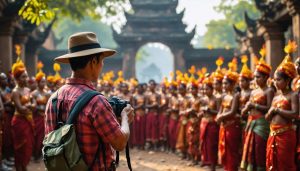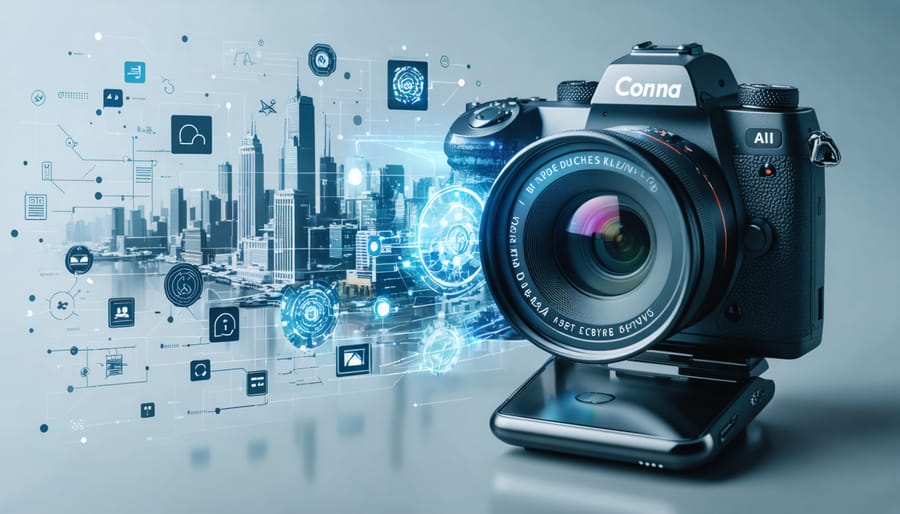
The photography industry stands at a pivotal crossroads in 2024, where artificial intelligence and mobile technology are fundamentally reshaping how we capture, edit, and share images. From AI-powered cameras that can predict the perfect moment to shoot, to smartphone manufacturers pushing the boundaries of computational photography, the traditional lines between professional and amateur equipment continue to blur. Professional photographers face both unprecedented challenges and opportunities as client expectations evolve and new revenue streams emerge through social media monetization and NFT photography.
These shifts aren’t just technological – they’re transforming business models across the industry. Subscription-based photography services are gaining traction, while environmental consciousness drives demand for sustainable practices and equipment. Meanwhile, the rise of virtual and augmented reality is creating entirely new markets for immersive visual experiences, pushing photographers to expand their skill sets beyond traditional photography.
Understanding these trends isn’t just about staying current – it’s about survival in an increasingly competitive market where adaptability and technical prowess are becoming as crucial as creative vision. Whether you’re a seasoned professional or an emerging photographer, the ability to navigate and leverage these changes will determine your success in the evolving landscape of modern photography.
Artificial Intelligence’s Growing Role in Photography
Computational Photography Advances
Computational photography has revolutionized how we capture and process images, with artificial intelligence leading the charge in this transformation. Modern smartphones and cameras now leverage sophisticated AI algorithms to enhance photos in ways that were previously impossible or required extensive manual editing.
Subject detection has become remarkably advanced, with cameras instantly recognizing and optimizing settings for faces, pets, landscapes, and even specific scenarios like food photography. This technology works in real-time, adjusting focus, exposure, and color balance to ensure optimal results before you even press the shutter.
Smart HDR has evolved beyond simple exposure bracketing, now utilizing AI to analyze and merge multiple frames intelligently. The result is photos with exceptional dynamic range that maintain natural-looking shadows and highlights, even in challenging lighting conditions.
Perhaps most impressive are the automated editing capabilities that have emerged. AI-powered tools can now handle complex tasks like sky replacement, portrait enhancement, and even removing unwanted objects from photos with remarkable precision. These features democratize advanced editing techniques, allowing photographers of all skill levels to achieve professional-looking results.
The integration of neural networks has also improved low-light photography significantly, with night mode capabilities that can capture stunning details in near-darkness while maintaining natural color and reducing noise. As these technologies continue to evolve, we’re seeing the boundaries between computational and traditional photography becoming increasingly blurred.
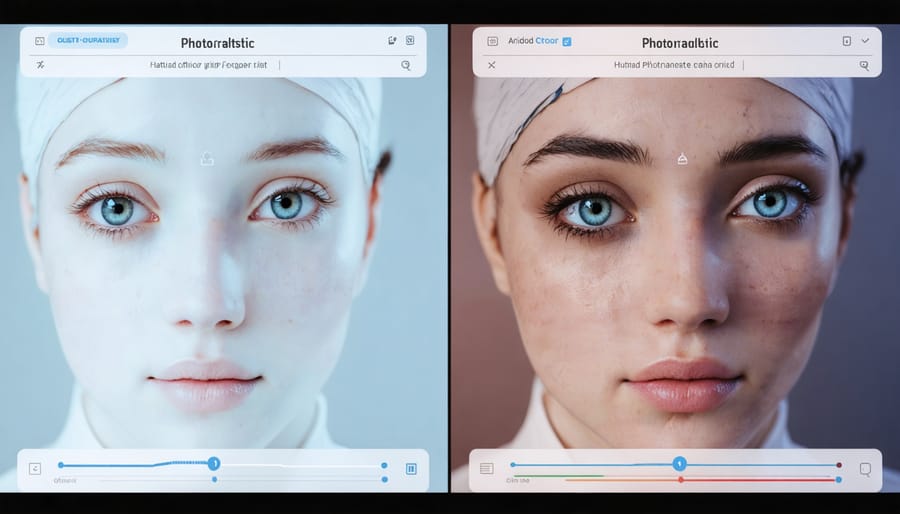
AI-Powered Post-Processing Tools
Artificial Intelligence has revolutionized photo editing, introducing tools that can transform your photography workflow from time-consuming to remarkably efficient. Today’s AI-powered software can automatically enhance images, remove unwanted objects, and even generate entirely new elements with unprecedented accuracy.
Leading the charge are applications like Adobe’s Generative Fill and Luminar Neo, which use machine learning to understand image context and make intelligent adjustments. These tools can now perform complex tasks like sky replacement, portrait retouching, and background removal with just a few clicks, saving photographers hours of manual editing time.
What’s particularly exciting is how AI assists in maintaining consistency across large batches of photos. Wedding and event photographers can apply style presets across hundreds of images while AI ensures each photo receives individualized attention to exposure, color balance, and skin tones.
The technology has also democratized advanced editing techniques. Tasks that once required extensive Photoshop expertise, like complex masking or perspective corrections, are now accessible to photographers of all skill levels. However, it’s important to note that AI tools work best when viewed as assistants rather than replacements for human creativity and judgment.
Looking ahead, we’re seeing the emergence of AI tools that can analyze composition, suggest optimal crops, and even provide real-time shooting guidance, pointing to a future where artificial intelligence becomes an indispensable partner in the creative process.
The Rise of Mobile Photography Services
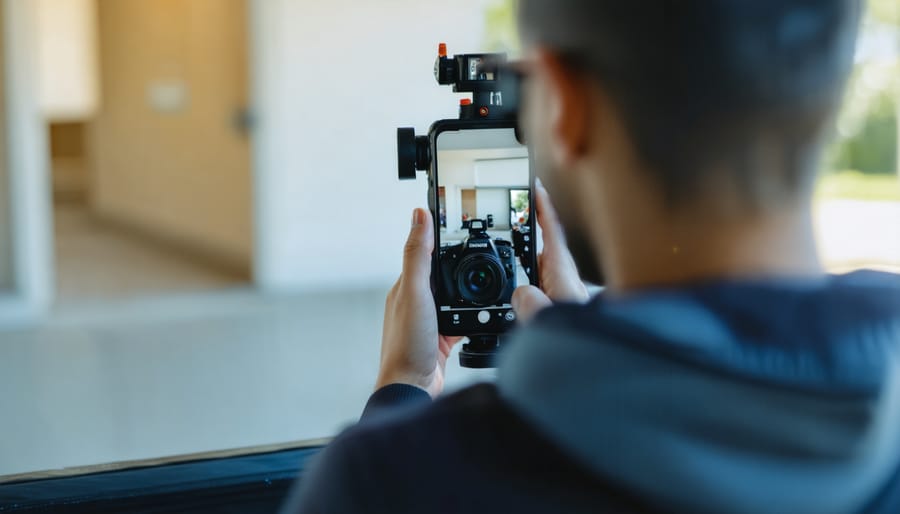
On-Demand Photography Platforms
The rise of on-demand photography platforms has revolutionized how clients book photoshoots and how photographers find work. Apps like Snappr, Shoott, and Perfocal have created a marketplace where customers can book professional photographers with just a few taps on their smartphones, much like ordering a ride-share service.
These platforms typically operate on a simple premise: clients specify their photography needs, location, and preferred time slot, and the app matches them with available photographers in their area. Pricing is often standardized and transparent, eliminating the need for lengthy negotiations. For customers, this means unprecedented convenience and accessibility to professional photography services.
However, the impact on professional photographers has been mixed. While these platforms provide a steady stream of clients and handle marketing and payment processing, they often take a significant commission, sometimes up to 30-40% of the booking fee. Some photographers argue that this model has contributed to price compression in the industry, making it harder to maintain premium pricing for direct bookings.
Despite these concerns, on-demand platforms have opened up new opportunities for emerging photographers to build their portfolios and gain experience. They’ve also expanded the market by making professional photography services accessible to clients who might have previously considered them out of reach. Many photographers now use these platforms as part of a diversified business strategy, combining platform work with traditional client relationships and specialized services.
Mobile-First Studio Management
The photography industry has witnessed a significant shift towards mobile-first solutions, revolutionizing how photographers manage their businesses on the go. Modern studio management apps have become indispensable tools, offering comprehensive solutions that transform smartphones into powerful business command centers.
Today’s photographers can handle entire client workflows through their mobile devices, from initial inquiry to final payment. Popular apps like Honeybook, Studio Ninja, and ShootQ have optimized their platforms for mobile use, allowing photographers to respond to client messages, send contracts, and manage bookings while between shoots. This mobility has become crucial for implementing effective marketing strategies for photographers who are constantly on the move.
Payment processing has also evolved, with mobile-first solutions like Square, Stripe, and PayPal offering seamless integration with photography business apps. These platforms enable photographers to accept deposits, process final payments, and even set up recurring billing for subscription-based services directly from their phones.
Client galleries and delivery systems have also embraced mobile optimization. Services like Pixieset and ShootProof now offer robust mobile apps that let photographers upload, curate, and share galleries while commuting between locations. Additionally, scheduling features within these apps sync with popular calendar platforms, helping photographers avoid double bookings and manage their time more effectively.
The rise of mobile studio management tools reflects the industry’s growing need for flexibility and efficiency, allowing photographers to spend less time on administrative tasks and more time behind the camera.
Subscription-Based Photography Services
Software-as-a-Service for Photographers
The photography industry has witnessed a significant shift towards cloud-based solutions, transforming how photographers manage their workflow and interact with clients. These Software-as-a-Service (SaaS) platforms have become essential tools, offering comprehensive solutions for image storage, editing, and business management.
Cloud-based editing platforms like Adobe Creative Cloud and Capture One Live have revolutionized post-processing workflows, allowing photographers to work seamlessly across devices and collaborate with clients in real-time. These services often include AI-powered features for faster culling and batch editing, saving precious hours in post-production.
Storage solutions have evolved beyond simple backup systems, with services like PhotoShelter and SmugMug offering secure cloud storage while integrating with social media platforms for seamless content sharing. Many photographers now combine these services with specialized portfolio website development tools to create professional online presences.
Client gallery services have also become more sophisticated, offering features like direct printing, download tracking, and integrated payment systems. These platforms help photographers streamline their delivery process while providing a premium experience for clients.
The subscription-based model of these services often proves more cost-effective than traditional software licenses, allowing photographers to scale their technology investments according to their business growth. As these platforms continue to evolve, they’re increasingly incorporating features for customer relationship management and automated workflow solutions, making them indispensable tools for modern photography businesses.
Client Subscription Models
The photography industry is witnessing a significant shift towards subscription-based business models, offering photographers a more predictable income stream while providing clients with consistent access to services. Rather than relying solely on one-time bookings, many photographers now offer monthly or annual membership packages that include regular photo sessions, digital downloads, and print credits.
Family photographers are leading this trend by creating “milestone packages” that document a child’s growth throughout the year, with quarterly sessions and digital galleries included. Wedding photographers have adapted by offering engagement-to-anniversary packages, covering multiple events in a couple’s journey rather than just the wedding day.
Commercial photographers are finding success with retainer-based subscriptions for businesses needing regular content for social media and marketing materials. These arrangements typically include a set number of shooting hours per month and a guaranteed turnaround time for edited images.
The subscription model benefits both parties: photographers enjoy steady cash flow and better client relationships, while customers receive premium service at a better value than booking individual sessions. Many photographers include value-added perks like priority booking, exclusive products, or members-only mini-sessions to enhance the appeal of their subscription offerings.
To implement this model successfully, photographers should start with a pilot program, carefully calculate their pricing to ensure profitability, and create clear terms and conditions regarding session frequency and deliverables. Digital platforms and client management software have made it easier to handle recurring billing and schedule management for subscription clients.
Sustainable and Ethical Photography Practices
Eco-Friendly Equipment and Practices
The photography industry is making significant strides toward environmental consciousness, with manufacturers and photographers alike embracing eco-friendly practices. Many camera makers now use recycled materials in their equipment, with some pioneering biodegradable camera bodies and packaging. Solar-powered charging solutions for cameras and equipment are gaining popularity, reducing reliance on traditional power sources.
Photographers are increasingly adopting sustainable practices in their workflows. Digital-first approaches have significantly reduced paper waste, while cloud storage solutions minimize the need for physical storage devices. LED lighting systems have replaced traditional hot lights, consuming up to 80% less energy while producing minimal heat.
The rise of refurbished equipment markets has given photographers budget-friendly options while reducing electronic waste. Many professionals now choose to repair rather than replace their gear, supporting a growing network of specialized repair services. Additionally, rental services are becoming more popular, allowing photographers to access high-end equipment without the environmental impact of purchasing new gear.
Chemical-free printing processes and eco-certified paper are transforming the print photography sector. Studios are implementing energy-efficient climate control systems and using natural light whenever possible, demonstrating that sustainability and professional quality can go hand in hand.
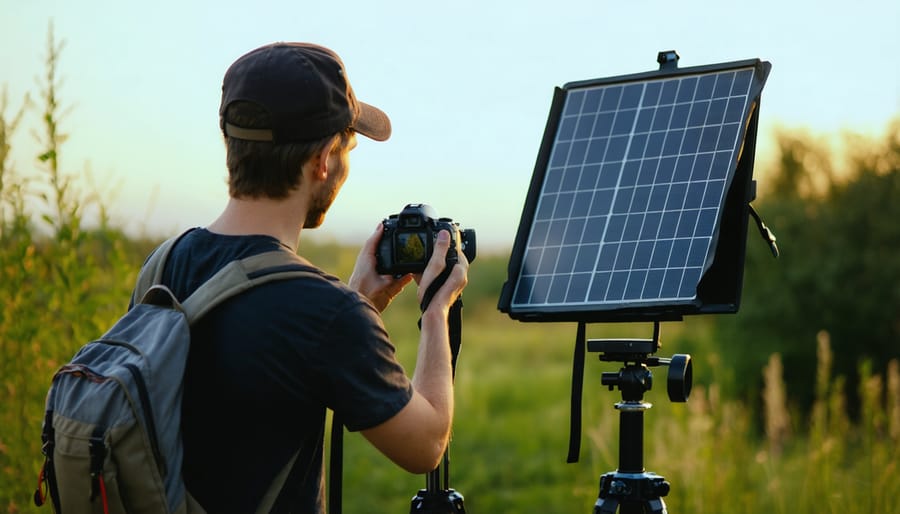
Ethical Photography Guidelines
The photography industry is experiencing a significant shift in ethical considerations, with transparency and authentic representation taking center stage. Photographers are now expected to clearly disclose any AI-enhanced elements or significant digital manipulations in their work, particularly in photojournalism and documentary photography.
Consent and privacy have become paramount concerns, especially with the rise of street photography and social media sharing. Many photographers are adopting written release forms and developing clear communication protocols with subjects, even in public spaces where photography is legally permitted.
Cultural sensitivity and representation have emerged as crucial considerations. Photographers are increasingly mindful of avoiding cultural stereotypes and ensuring diverse representation in their portfolios. This includes being respectful of cultural ceremonies, traditional practices, and sacred sites when photographing different communities.
Environmental ethics are also shaping how photographers work in natural settings. This includes following “leave no trace” principles, maintaining safe distances from wildlife, and being transparent about the use of staged wildlife shots.
Post-processing ethics have evolved too, with many photographers establishing personal guidelines about the extent of editing they’ll perform. While creative photography allows more flexibility, documentary work typically requires stricter adherence to reality-based representation, with minimal adjustments limited to exposure, contrast, and basic color correction.
As we’ve explored throughout this article, the photography industry is experiencing unprecedented transformation driven by technological innovation and evolving consumer behavior. The convergence of AI-powered tools, mobile photography capabilities, and changing business models is reshaping how photographers work and create.
Looking ahead, we can expect AI to become even more integrated into photography workflows, though it’s unlikely to replace human creativity entirely. Instead, it will serve as a powerful tool that enables photographers to focus more on artistic expression while automating tedious technical tasks. The rise of computational photography will continue to blur the lines between smartphone and professional camera capabilities, pushing manufacturers to innovate in ways that emphasize unique value propositions.
Sustainability concerns and circular economy principles are likely to gain more traction, influencing both equipment manufacturing and photography practices. The subscription-based model will probably expand beyond software to include more hardware and service offerings, making professional tools more accessible to emerging photographers.
For photographers to thrive in this evolving landscape, adaptability will be key. Success will increasingly depend on embracing new technologies while maintaining distinctive creative voices and building strong client relationships. While these changes may seem daunting, they actually represent exciting opportunities for innovation and growth in the field.
The future of photography looks bright, with democratized access to advanced tools enabling more diverse perspectives and creative expressions than ever before. Those who can balance traditional photographic principles with emerging technologies will be best positioned to succeed in this dynamic industry.
















